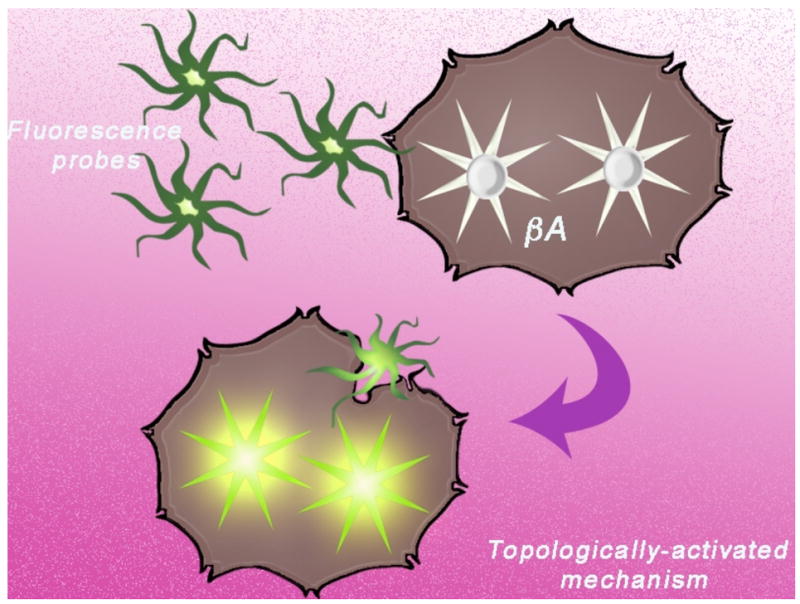Fig. (11).

Mechanism of activation of topologically activated fluorescent dyes. Dyes change their conformation due to a change in environment leading to an increase in fluorescence. For example, conformational degrees of freedom quench the fluorescent signal when the dye is unbound, but upon binding to β-amyloid plaques, the dye becomes rigid and fluoresces.
